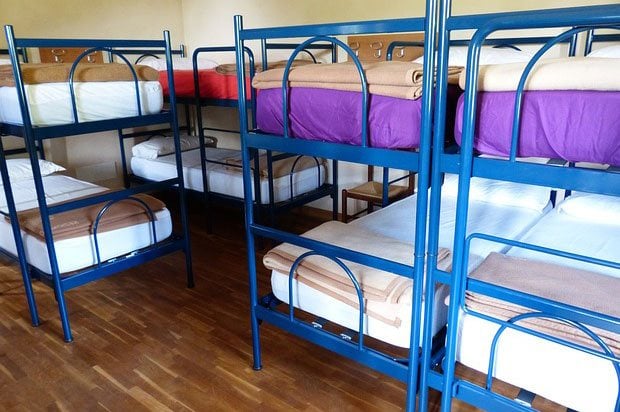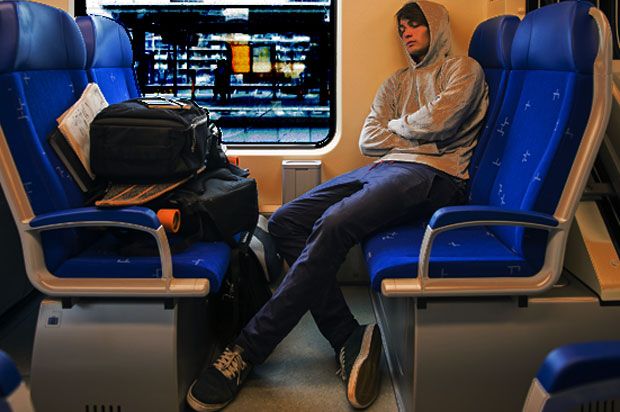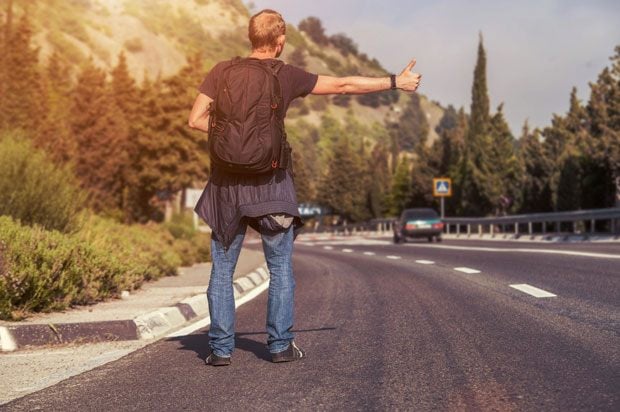InterRailing

Fancy seeing LOADS of Europe in an affordable way? All aboard for a European escapade. We explain what InterRailing is and why it’s just the ticket for those in search of a multi-country adventure.
What is InterRailing?
The InterRail pass combines low cost travel in Europe with maximum flexibility. The pass allows you up to one month of unlimited train journeys across 30 countries. Substantial discounts are also available on European ferries for InterRail pass holders. InterRail also offers single country passes for many countries in Europe.
Who can InterRail?
Although it’s available to everyone, the prices are substantially cheaper if you are 27 or under.
How much does InterRailing cost?
Prices range from £43 for certain One Country passes to £759 for the bumper three-month first-class Global Pass. It all depends on where you want to go, how long you want to travel for, and whether you want to travel first or second class. If that sounds a bit pricey we’ve got some tips for how to travel cheaply here.
Visit the InterRail website and download the Rail Planner app to plan your InterRail trip, make seat reservations and save money by taking advantage of discounts.
InterRailing tips
If you’re planning an InterRailing trip, be sure to check these top tips to avoid surprises.
- Many trains require a supplement above the regular ticket price, and this is almost always the case with couchette and sleeper trains and many high-speed trains. Be particularly alert in Italy and Germany, where supplements seem to be charged at will.
- In Italy, booking ahead is strongly advised, due to overcrowding and train repairs.
- You can’t use an InterRail pass in your own country; although you can get discounts on travel in the UK. You can’t use your InterRail on Eurostar, although again you can get a discount.
- Many European trains split into two parts half-way through the journey with the two halves ending up in different destinations, be sure to check you’re in the correct part of the train.
- Buy food and drink before you get on a train. Trains can often get delayed so may be longer than you had planned. Food prices on board are often quite high and local food and drink is often better.
One final InterRailing tip: If you have a rail pass with a limited number of days travel on it, make the most of it by only using it in the more expensive countries. Trains are most expensive in the Scandinavian countries, France, Belgium, the Netherlands, Germany, Switzerland, Luxembourg and Austria and the cheapest in Italy and Eastern Europe.
How to stay safe when InterRailing
- When travelling on trains, keep your valuables hidden and close – for instance, in a money-belt under your clothes.
- Use a cable-lock to secure your backpack to your seat or the luggage rack.
- What with all this criss-crossing of the continent, you may not know when you’re about to cross a border, and those armed border police piling into your carriage can come as a bit of a surprise. They’ll ask to see your passport, and they may check through the contents of your rucksack thoroughly, so don’t be carrying anything you shouldn’t.
- Make sure you’re protected in case anything goes wrong and buy some travel insurance.
Check out the rest of our travel safety tips here.
What to pack
- If you’re passing through six countries, you don’t have to lug around six guidebooks for each one. Take a general Europe guidebook, such as Lonely Planet’s Europe on a Shoestring, or download some travel apps for your phone.
- Sun cream.
- Sunhat.
- Waterproofs (yes, it does rain outside the UK).
- Sleeping bag.
- Small bottle of clothes-washing liquid.
- Penknife (just remember not to take this on a plane if you’ve got any flights to catch).
- Gas-cooker (again, you won’t get this on a plane).
- Basic eating accessories, such as a saucepan, cutlery, and plastic crockery.
- Camping equipment if you’re planning to bed down in the great outdoors.
- A portable battery to top up your phone.
Where to sleep when you InterRail
There are usually three main options:
Camping
You can camp for a fraction of the price of a hostel bed and there’s less need to book ahead. As well as countryside and seaside campsites, there are many in or around most major cities, and they often run free buses into the centre. Buy a map that shows campsites and you’ll never be stuck for somewhere to stay. Tourist information centres will be able to give you a list, too.
Hostel and hotels
Hostels are ideal for those looking to meet people on their travels. You can sleep in a shared dorm or bag yourself a group or double room. You’ll often find that a one- or two-star hotel works out just as cheap as a hostel, if not cheaper. It’s often a good idea to book your hotel or hostel in advance, but if not, at least try to arrive at a new destination in the morning to give yourself enough time to look for somewhere to stay.
Sleeping on the train
Before you get too comfy, make sure you won’t have to pay for the privilege. Actual sleeper cabins with bunks are generally not covered by your InterRail ticket. If you want to sleep in one of these, you’ll need to pay a supplement. Even so, most night trains will have seats that you can sleep on for free – some tip back or unfold to make a comfy-ish bed. For more tips, read our article on night trains.
Check out the rest of our articles on travelling here.
Next Steps
- Chat about this subject on our Discussion Boards.
By Holly Turner
Updated on 09-Feb-2023
No featured article









